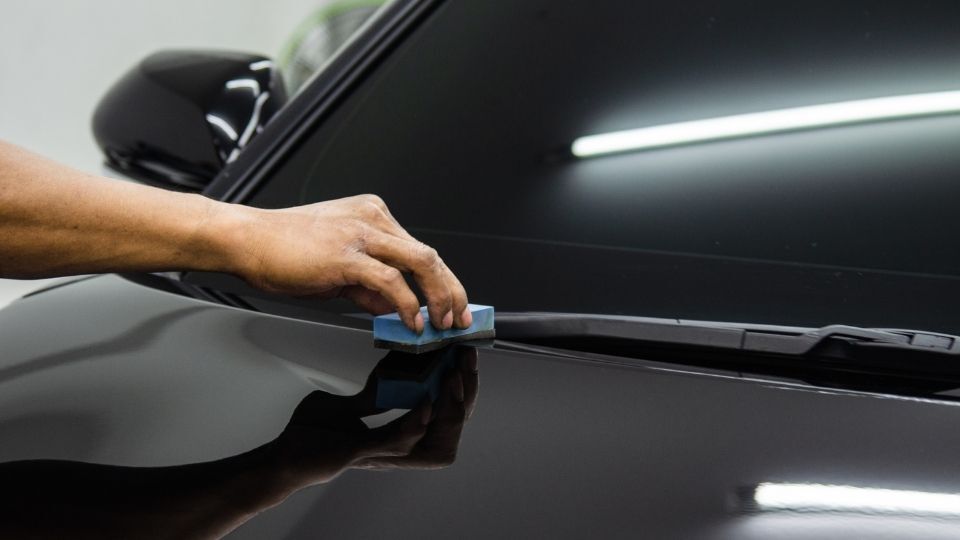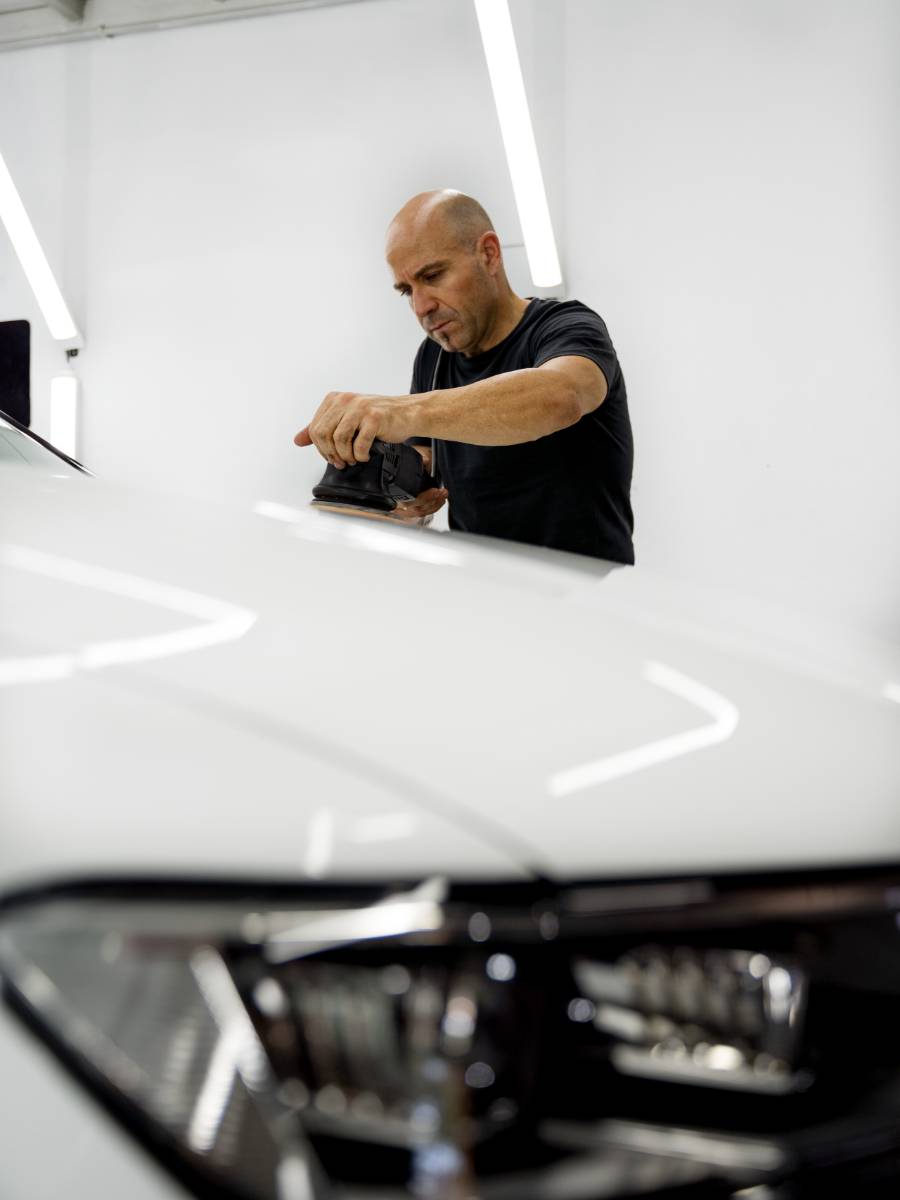Everything You Need to Know About Ceramic Coating for Cars
Everything You Need to Know About Ceramic Coating for Cars
Blog Article
Ceramic Covering vs. Traditional Wax: Which Supplies Much Better Long-Term Defense?
The debate between ceramic finishes and typical wax for vehicle security has amassed substantial attention among vehicle fanatics and specialists alike. While both satisfy of guarding paint, their distinctions in longevity, application, and lasting upkeep prices might affect a consumer's choice. Ceramic coatings flaunt remarkable durability and resistance to environmental elements, yet the complexity of their application raises inquiries concerning accessibility and usefulness. As we discover these contrasting choices, it ends up being vital to consider not only the prompt advantages however likewise the implications for car care over time.
Review of Ceramic Finish
Ceramic covering has actually gained significant popularity amongst automotive lovers and detailers alike due to its innovative safety high qualities. This innovative modern technology is designed to develop a sturdy, hydrophobic guard over an automobile's paint surface area, significantly improving its resistance to ecological impurities such as dirt, UV rays, and chemical discolorations. Unlike standard wax, which offers a short-lived layer of defense, ceramic layers bond at a molecular level with the paint, offering resilient longevity-- frequently prolonging beyond 2 years with proper maintenance.
The application procedure entails thorough preparation of the automobile's surface, including cleansing and polishing to ensure ideal bond. When applied, the coating cures to form a durable layer that not just includes deepness and gloss to the paint but also simplifies upkeep. With its hydrophobic residential or commercial properties, ceramic finishing permits water and dirt to slide off more quickly, lowering the frequency of laundries and reducing the danger of swirl marks.
Moreover, ceramic layers are readily available in different formulas, enabling users to pick products tailored to their particular needs and choices. Overall, ceramic finishing stands for a considerable advancement in paint defense technology, providing exceptional performance compared to standard alternatives.
Overview of Typical Wax
Commonly concerned as a staple in auto care, wax works as a popular selection for those seeking a straightforward approach to boost and shield their car's paint - ceramic coating. Automotive wax commonly makes up all-natural components, such as carnauba, or artificial substances, developed to develop a safety layer externally of the paint. This layer not only enhances the vehicle's gloss and beam but also offers an obstacle against ecological contaminants
The application of wax is typically easy to use, making it accessible for both specialists and DIY lovers. It can be used by hand or machine, allowing for versatility in the detailing process. As soon as applied, wax needs a treating period, after which it hardens to develop a safety shell. Wax is additionally understood for its capability to ward off water, advertising a beading impact that assists in the avoidance of water places and corrosion.
However, while wax works for enhancing the visual charm of a lorry, it is necessary to keep in mind that the security it supplies might require extra constant reapplication compared to alternate items, such as ceramic finishes. Overall, typical wax continues to be a preferred choice for those prioritizing convenience of usage and instant visual enhancement.
Resilience and Longevity Contrast
While both ceramic finishings and conventional wax deal protective benefits for automobile paint, their longevity and durability differ substantially. Traditional wax, normally made from all-natural carnauba or synthetic polymers, normally supplies a protective layer that lasts approximately 3 to six months. This reasonably short life-span necessitates routine reapplication to preserve optimal security.
In contrast, ceramic coatings are crafted from advanced nanotechnology, creating a covalent bond with the paint surface. This results in a robust, hydrophobic layer that can withstand for 2 to five years, relying on the product and ecological conditions. The remarkable toughness of ceramic coatings is credited to their chemical framework, which provides improved resistance to scrapes, UV rays, and oxidation.

Security Against Environmental Aspects
Securing a vehicle's paint from environmental factors is critical for maintaining its appearance and worth with time. Automobiles are constantly exposed to a range of elements, consisting of UV rays, bird droppings, tree sap, acid rain, and road grime, all of which can jeopardize the stability of the paintwork.
Ceramic finishings supply a robust defense versus these ecological aggressors. Unlike traditional wax, which can weaken promptly under UV exposure, ceramic coatings develop a durable, hydrophobic layer that stands up to the damaging effects of sunlight and environmental contaminants. This innovative innovation produces a chemical bond with the vehicle's surface, offering exceptional security that lasts for years, also in harsh conditions.
Standard wax, while simpler to use, commonly requires constant reapplication and provides restricted resistance to impurities and UV rays. With time, it can damage down, leaving the paint at risk to scrapes and oxidation. In contrast, ceramic coverings keep their protective qualities much longer, substantially lowering the danger of paint damages and making sure that the automobile retains its aesthetic charm. Consequently, ceramic finishings are significantly acknowledged as the remarkable option for long-term defense against ecological elements.
Application and Maintenance Distinctions
The techniques of application and succeeding upkeep for ceramic coatings and conventional wax vary substantially, impacting the total user experience and performance of each product. Ceramic coatings require an even more complex application procedure, normally entailing surface area prep Click This Link work that includes cleaning, sanitizing, and brightening the automobile. Once the surface prepares, the ceramic covering is applied in a controlled environment, usually requiring specialist competence to make certain proper curing and bonding to the paint.

While both items improve car appearance, the longer-lasting security supplied by ceramic layers may validate their initial financial investment, regardless of the more requiring application procedure. Conversely, typical wax stays a preferred selection for those seeking a less complex, albeit short-term, option.

Final Thought
Finally, ceramic layers show substantial advantages over typical wax in terms of longevity and environmental management. With a life expectancy expanding two to five years and premium resistance to UV rays, dust, and chemical spots, ceramic coverings offer an extra reliable remedy for long-term vehicle maintenance. Although the application process might call for expert competence, the resulting cost financial savings and decreased regularity of reapplication highlight the value of ceramic coverings for those seeking optimum automobile security.
The argument in between ceramic coverings and conventional wax for lorry security has gathered substantial interest amongst vehicle enthusiasts and professionals alike. Unlike conventional wax, which provides a short-lived layer of security, ceramic coatings bond at a molecular degree with the paint, supplying durable sturdiness-- frequently expanding beyond two years with correct maintenance.
While both ceramic layers and conventional wax deal protective benefits for vehicle paint, their resilience and long life differ substantially. For vehicle lovers looking for long-term security, ceramic finishings present an engaging advantage over standard wax items.
In conclusion, ceramic coverings show significant advantages over standard wax in terms of durability and ecological protection.
Report this page